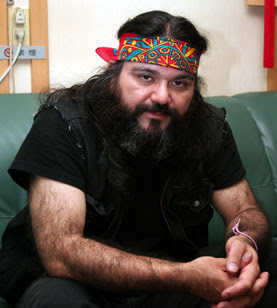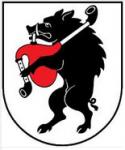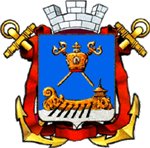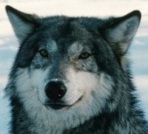Разделил старую тему, обычные фотографии перенёс сюда:





Войти Создать учётную запись

Айны
#7

 Опубликовано 07 Май 2010 - 19:37
Опубликовано 07 Май 2010 - 19:37

Айны. Статья в журнале "Вокруг света".
http://www.vokrugsve...s/article/2877/
Статья об айнах в "Следопыте":




 R1a1a, R1a1a et R1a1a
R1a1a, R1a1a et R1a1a K1b2a, H et T1а
K1b2a, H et T1а
#9

 Опубликовано 19 Март 2011 - 23:44
Опубликовано 19 Март 2011 - 23:44

#13

 Опубликовано 05 Сентябрь 2011 - 18:43
Опубликовано 05 Сентябрь 2011 - 18:43

Genetic origins of the Ainu inferred from combined DNA analyses of maternal and paternal lineages
Atsushi Tajima, Masanori Hayami, Katsushi Tokunaga, Takeo Juji, Masafumi Matsuo, Sangkot Marzuki, Keiichi Omoto and Satoshi Horai
Abstract
The Ainu, a minority ethnic group from the northernmost island of Japan, was investigated for DNA polymorphisms both from maternal (mitochondrial DNA) and paternal (Y chromosome) lineages extensively. Other Asian populations inhabiting North, East, and Southeast Asia were also examined for detailed phylogeographic analyses at the mtDNA sequence type as well as Y-haplogroup levels. The maternal and paternal gene pools of the Ainu contained 25 mtDNA sequence types and three Y-haplogroups, respectively. Eleven of the 25 mtDNA sequence types were unique to the Ainu and accounted for over 50% of the population, whereas 14 were widely distributed among other Asian populations. Of the 14 shared types, the most frequently shared type was found in common among the Ainu, Nivkhi in northern Sakhalin, and Koryaks in the Kamchatka Peninsula. Moreover, analysis of genetic distances calculated from the mtDNA data revealed that the Ainu seemed to be related to both the Nivkhi and other Japanese populations (such as mainland Japanese and Okinawans) at the population level. On the paternal side, the vast majority (87.5%) of the Ainu exhibited the Asian-specific YAP+ lineages (Y-haplogroups D-M55* and D-M125), which were distributed only in the Japanese Archipelago in this analysis. On the other hand, the Ainu exhibited no other Y-haplogroups (C-M8, O-M175*, and O-M122*) common in mainland Japanese and Okinawans. It is noteworthy that the rest of the Ainu gene pool was occupied by the paternal lineage (Y-haplogroup C-M217*) from North Asia including Sakhalin. Thus, the present findings suggest that the Ainu retain a certain degree of their own genetic uniqueness, while having higher genetic affinities with other regional populations in Japan and the Nivkhi among Asian populations.






КУНСТКАМЕРА
 R1a1a, R1a1a et R1a1a
R1a1a, R1a1a et R1a1a K1b2a, H et T1а
K1b2a, H et T1а
#15

 Опубликовано 27 Декабрь 2011 - 15:36
Опубликовано 27 Декабрь 2011 - 15:36

Yamaguchi Bin Skeletal Morphology of the Jomon People// International Symposium on Japanese as a member of the Asian and Pacific population /Ed. Hanihara K. September 25 – 29 1990, Kyoto
Ямагути Бин Скелетная морфология людей Дзёмон
с. 53
Abstract
The Jomon people were different from modern Japanese with many distinctive skeletal characters, such as prominent glabella and nasal bones, broad and low face, edge-to-edge bite, long disctal limb segments, flat tibial shaft and so on. Most of these characteristics are shared by the modern Ainu in Hokkaido. The modern Japanese, on the other hand, share theirs characteristic features, such as flat frontnasal profile, prohecting upper incisors, relatively short distal limb segments, and so on, with the Mongoloid peoples in the Asiatic mainland.
Drastic physical changes occured to the Japanese inhabitants during the Yayoi and Kofun periods under strong genetic and cultural influences of the immigrants from the mainland who introduced agriculture and other technology to these islands. The influences spread rapidly over Honshu but slowed down as they went to the north, thus allowing tthe Ainu to retain physical characters of the native Jomon population.
The Jomon-Ainu cluster is quite isolated morphologically among the Neolithic and later populations in East Asia. They share many archaic characters with the Upper-Palaeolithic population in Eurasia. Among the fossil sapiens remains from East Asia, the Liujiang skull from South China and Minatogawa skull I from Okinawa are relatively close to the Jomon, while the Zhoukoudian Upper Cave series from Beijing is rather remote.
Дзёмонско-айнский кластер довольно-таки изолирован среди неолитических и поздних популяций в Восточной Азии. Они имеют много общих черт с верхнепалеолитической популяцией Евразии. Среди ископаемых останков вида сапиенс из Восточной Азии череп из Люцзяня из Южного Китая, а также череп № I из Минатогава с Окинавы достаточно близки дзёмонским черепам, в то время как черепа из Верхней пещеры Чжоукоудянь, из Пекина достаточно сильно отличаются.
Сопоставление черепа эпохи дзёмон и черепа исторического айну по продольному и поперечному разрезу, источник – N.G. Munro Prehistoric Japan, 1911 с. 669;
a comparison of Jomon skull and modern Ainu skull by their longitudinaland transverse section, source - N.G. Munro Prehistoric Japan, 1911, p. 669
 R1a1a, R1a1a et R1a1a
R1a1a, R1a1a et R1a1a K1b2a, H et T1а
K1b2a, H et T1а
#16

 Опубликовано 27 Декабрь 2011 - 15:37
Опубликовано 27 Декабрь 2011 - 15:37

Atsushi Tajima, Masanori Hayami, Katsushi Tokunaga, Takeo Juji, Masafumi Matsuo, Sangkot Marzuki, Keiichi Omoto and Satoshi Horai
The Ainu, a minority ethnic group from the northernmost island of Japan, was investigated for DNA polymorphisms both from maternal (mitochondrial DNA) and paternal (Y chromosome) lineages extensively. Other Asian populations inhabiting North, East, and Southeast Asia were also examined for detailed phylogeographic analyses at the mtDNA sequence type as well as Y-haplogroup levels. The maternal and paternal gene pools of the Ainu contained 25 mtDNA sequence types and three Y-haplogroups, respectively. Eleven of the 25 mtDNA sequence types were unique to the Ainu and accounted for over 50% of the population, whereas 14 were widely distributed among other Asian populations. Of the 14 shared types, the most frequently shared type was found in common among the Ainu, Nivkhi in northern Sakhalin, and Koryaks in the Kamchatka Peninsula. Moreover, analysis of genetic distances calculated from the mtDNA data revealed that the Ainu seemed to be related to both the Nivkhi and other Japanese populations (such as mainland Japanese and Okinawans) at the population level. On the paternal side, the vast majority (87.5%) of the Ainu exhibited the Asian-specific YAP+ lineages (Y-haplogroups D-M55* and D-M125), which were distributed only in the Japanese Archipelago in this analysis. On the other hand, the Ainu exhibited no other Y-haplogroups (C-M8, O-M175*, and O-M122*) common in mainland Japanese and Okinawans. It is noteworthy that the rest of the Ainu gene pool was occupied by the paternal lineage (Y-haplogroup C-M217*) from North Asia including Sakhalin. Thus, the present findings suggest that the Ainu retain a certain degree of their own genetic uniqueness, while having higher genetic affinities with other regional populations in Japan and the Nivkhi among Asian populations.
 R1a1a, R1a1a et R1a1a
R1a1a, R1a1a et R1a1a K1b2a, H et T1а
K1b2a, H et T1а
#18

 Опубликовано 29 Июнь 2012 - 12:28
Опубликовано 29 Июнь 2012 - 12:28

#20

 Опубликовано 27 Сентябрь 2012 - 19:59
Опубликовано 27 Сентябрь 2012 - 19:59


На этой картинке сравнение айнов с австралийцами,я правильно понял?Просто человек в середине не айн,это фотография австралийца
#21

 Опубликовано 27 Сентябрь 2012 - 20:05
Опубликовано 27 Сентябрь 2012 - 20:05

Да. Рис. 1-2- айну, рис.3- новокаледонец, рис.4- фиджиец, рис.5- арунта, рис.6- маори, рис.7- ведда с о. Цейлон, рис.8- тода из Южной Индии, рис.9- меланезиец.
 R1a1a, R1a1a et R1a1a
R1a1a, R1a1a et R1a1a K1b2a, H et T1а
K1b2a, H et T1а
#25

 Опубликовано 25 Февраль 2015 - 14:36
Опубликовано 25 Февраль 2015 - 14:36

Айнская раса (собрание цитат из научных работ):
http://www.anthroquote.ru/ainuid
PREHISTORIC HUNTER-GATHERERS IN JAPAN
http://www.um.u-toky...27/no27000.html
Книга по этнической антропологии айнов с шикарными фотографиями (обратите внимание на цену):
http://www.abebooks....l... Aino&sts=t
#27

 Опубликовано 12 Январь 2020 - 19:40
Опубликовано 12 Январь 2020 - 19:40

Посетителей, читающих эту тему: 1
0 пользователей, 1 гостей, 0 анонимных пользователей
 Вход
Вход Зарегистрироваться
Зарегистрироваться

 Наверх
Наверх














































